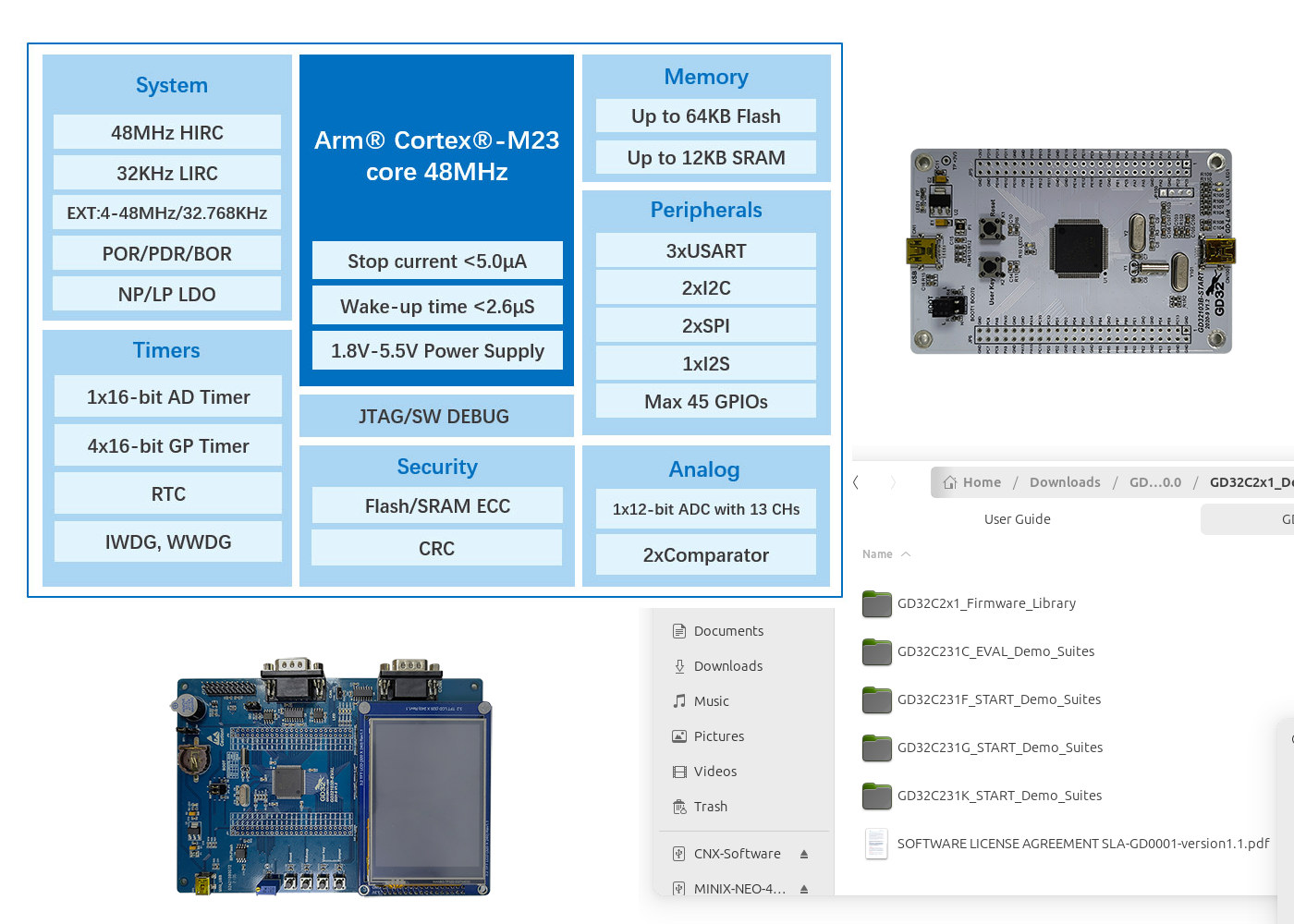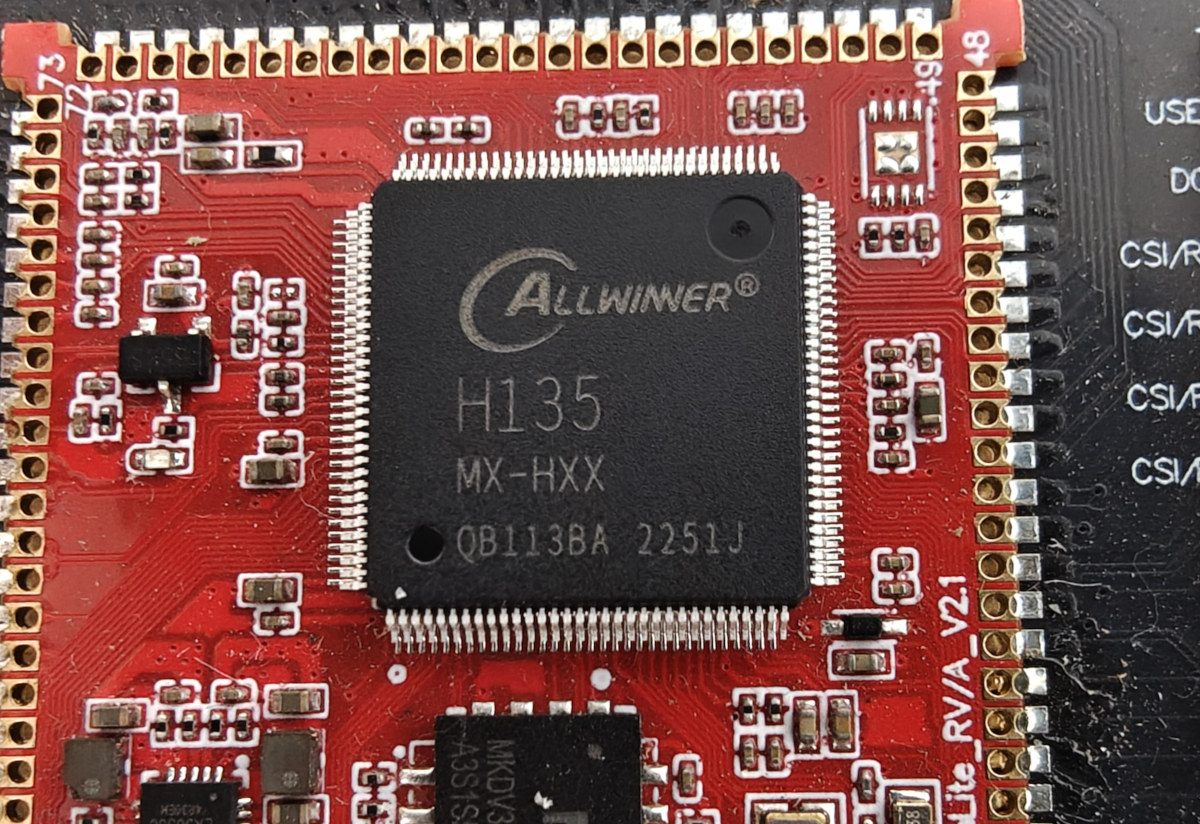Valetron Systems VALTRACK-V4-VTS-ESP32-C3 (or Valtrack V4 for short) is a 4G LTE GPS vehicle tracker based on ESP32-C3 WiFi and Bluetooth SoC and a SIMCom SIM7672 cellular and GNSS module. Designed to track bicycles, cars, or trucks, the Valtrack V4 GPS tracker is housed in an IP67 waterproof enclosure, takes 12V to 42V DC input from a lead battery or 3.7-4.2V from a backup LiPo or Li-Ion battery, and features an accelerometer to wake up when motion is detected or detect theft, as well as three RGB LEDs for status. Valtrack V4 specifications: Wireless MCU – Espressif ESP32-C3FH4 CPU – 32-bit RISC-V microcontroller @ up to 160 MHz; Memory – 400 KB SRAM Storage – 4 MB flash Wireless – 2.4 GHz Wi-Fi 4 & Bluetooth 5.0 Cellular and GNSS connectivity SIM7672G 4G LTE Cat 1 module with Global LTE band, 2G fallback, and GNSS support Nano SIM card […]
MicroSui lightweight, open-source C framework brings the Sui Network to microcontrollers
MicroSui (Sui Embedded Framework) is a lightweight, modular, open-source C framework that brings the Sui Network to microcontrollers from low-end 8-bit MCUs like AVR to more powerful 32-bit SoCs like the ESP32. Wait… What’s the Sui Network / Protocol exactly? It’s a blockchain platform designed for high-speed, scalable, and low-cost decentralized applications, which was introduced in May 2023 by Mysten Labs, a company founded by former Meta engineers. It competes with networks like Solana and Ethereum but with better performance. So far, the Sui Network works with web and mobile applications, but MicroSui aims to expand its usage to resource-constrained embedded devices. We’re told MicroSui provides support for all core operations such as key management, transaction construction, signing, and broadcast. It is a pure-C library with no OS dependency or dynamic memory usage, so it can be deployed on a wide range of microcontrollers. Higher-end microcontrollers with Internet access, such […]
GigaDevice GD32C231 entry-level Arm Cortex-M23 MCU ships with 12KB ECC SRAM, 32KB or 64KB ECC flash
GigaDevice GD32C231 entry-level microcontroller is built around a 48 MHz Arm Cortex-M23 core with up to 64KB ECC flash, 12KB ECC SRAM, and is offered in 20-pin to 48-pin packages with up to 45 GPIOs, a range of peripherals, analog inputs, and timers. The company says the GD32C231 series targets cost-effective small home appliances, BMS (Battery Management Systems), small-screen display devices, battery-powered handhelds, industrial auxiliary controls, and automotive aftermarket systems. GigaDevice GD32C231 key features and specifications: Core – Arm Cortex-M23 @ up to 48 MHz Memory – 12KB SRAM with ECC Storage – 32KB or 64KB flash with ECC Audio – 1x I2S Low-speed Peripherals Up to 45x GPIO Up to 3x USART, 2x I2C, 2x SPI Analog 12-bit ADC with 13 channels 2x analog comparators Timers 4x 16-bit general-purpose (GP) timers 16-bit Advanced (AD) timer RTC IWDG, WWDG 24-bit SysTick Misc – CRC module Supply Voltage – 2.3 to […]
Allwinner H135 RISC-V multimedia SoC is made for projectors and KVM solutions
The Allwinner H135 is a 64-bit RISC-V multimedia SoC officially designed for low-cost projectors. However, support for HDMI Rx and MJPEG 1080p60 video encoding also makes it suitable for entry-level KVM (Keyboard, Video, and Mouse) solutions. The H135 is based on the XuanTie C906 core, supports up to 256MB DDR2/DDR3/DDR3L, integrates a 1080p60 H.265/H.264 video decoder, MIPI DSI, dual-channel LVDS, and RGB888 display interfaces, and plenty of peripherals such as USB, SDIO, UART, SPI, PWM, GPIO, and more. Allwinner H135 specifications: CPU – XuanTie C906 RISC-V CPU with 64 KB I-cache + 64 KB D-cache Display Engine Allwinner Awonder1.1 Lite post processing Keystone correction in online mode and [-360°,360°] rotation in offline mode De-interlace (DI) up to 1920×1080 @ 60fps G2D hardware accelerator with rotate and mixer functions VPU Video decoding – H.265, H.264, H.263, MPEG-1/2/4, and VC-1 up to 1080p60 Image decoding – JPEG up to 1080p60 Video encoding […]
LILYGO MySondy GO LoRa32 board tracks radiosondes (weather balloons) with a 433MHz LoRa module
“LILYGO MySondy GO LoRa32” is a small ESP32-PICO-D4 board with a 433 MHz LoRa module and a 0.96-inch OLED designed to track (RS41) radiosondes, which are units attached to weather balloons used to collect meteorological data like temperature, humidity, and atmospheric pressure. It looks to be an older TTGO T3 board with a 433 MHz LoRa32 module from the company preloaded with the MySondo firmware that allows hobbyists in the amateur radio and weather enthusiast communities to track weather balloons and potentially recover them. LILYGO MySondy GO LoRa32 specifications: SiP – Espressif Systems ESP32-PICO-D4 system-in-package with ESP32 dual-core Xtensa processor @ 240 MHz, 2.4GHz Wi-Fi and Bluetooth 4.2 dual-mode, 4MB flash LoRa module – LORA32 RF Transceiver – Semtech SX1268 connected over SPI to the ESP32 SiP Frequency – 433 MHz (The T3 board has options for 868 and 915 MHz, which I suspect are not suitable for radiosondes) Tx […]
PCIe 7.0 specification released with up to 512GB/s bi-directional data rate
The PCIe 7.0 specification has been released, offering a data rate of up to 128GT/s, or a bi-directional transfer rate of 512GB/s in x16 configuration. This doubles the speed of PCIe 6.0 specification released in 2022, reaching up to 64GT/s data rate, or 256GB/s bi-directional transfer rates. PCI-SIG says the PCIe 7.0 specification targets data-intensive applications such as AI/ML, 800 Gbps Ethernet, cloud, and Quantum computing. Work on PCIe 8.0 has started, likely aiming for 256GT/s and a 2028 release date. Like PCIe 6.0, PCIe 7.0 utilizes PAM4 (Pulse Amplitude Modulation with 4 levels) signaling and Flit-based encoding. It also provides improved power efficiency and maintains backwards compatibility with previous generations of PCIe technology. New specifications are released regularly, and since the introduction of PCI in 1992 with a 013GB/s data rate, the PCI/PCIe bandwidth has roughly doubled every three years, as illustrated in the chart below. Although it typically […]
Quantum Tiny Linux SBC features an Allwinner H3 SoC, WiFi, a small Display, and more
Made by a Chinese engineer and content creator Zhihui Peng, the “Quantum Tiny Linux Development Kit” is a small SBC that’s smaller than an ID photo, powered by an Allwinner H3 SoC, and equipped with 512MB of RAM and a 16GB eMMC flash. It’s a design with a 31x22mm CPU module with an M.2 edge connector and a 40x35mm carrier board with a microSD card slot, WiFi 4 and Bluetooth 4.0 wireless module, a TFT display, two USB 2.0 ports, a 6-axis motion sensor, and a few buttons. Quantum Tiny specifications: Quark-N SoM SoC – Allwinner H3 CPU – Quad-core Cortex-A7 @ 1GHz GPU – Arm Mali400 MP2 GPU System Memory – 512MB LPDDR3 RAM Storage – 16GB eMMC flash M.2 edge connector with Ethernet, SPI, I2C, UART, Reusable GPIO, MIC, LINEOUT Dimensions – 31 x 22mm (6-layer PCB) Temperature Range – 0 to 80°C Atom-N Expansion Board M.2 socket […]
Quectel KCM0A5S Wi-SUN FAN module targets large IoT deployments for Smart Cities and Smart Agriculture
Quectel KCM0A5S is a Wi-SUN FAN module based on Silicon Labs EFR32FG25 Arm Cortex-M33 Sub-GHz wireless MCU, designed for applications such as street lighting, precision agriculture, industrial IoT, smart meters, and Smart Cities. Wi-SUN (IEEE 802.15.4g) is an LPWAN (Low Power Wide Area Network) standard leveraging IPv6 mesh networking for large-scale IoT deployments in Smart Cities and Smart Agriculture. The KCM0A5S module specifically supports the Wi-SUN Field Area Network (FAN) 1.1 protocol and operates across the 470–928 MHz frequency range. The module can act as a leaf node, a router, or a border router when paired with a Linux host in RCP (Radio Co-Processor) mode. Quectel KCM0A5S specifications: Wireless SoC – Silicon Labs EFR32FG25 CPU core – Arm Cortex-M33 core @ 97.5 MHz with DSP instruction and floating-point unit for signal processing Memory – 256 KB RAM data memory Storage – About 2MB flash program memory Radio – Sub-GHz radio operation […]










